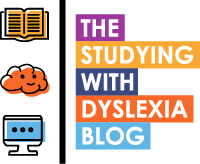As part of Neurodiversity Celebration Week, it’s essential to explore the unique traits and behaviours associated with Pathological Demand Avoidance (PDA). While PDA is considered a profile of autism rather than a distinct diagnosis, it can present very differently from other aspects of autism, especially in the classroom. Recognising the specific needs and behaviours of pupils with PDA can help create a supportive and effective learning environment.
At Studying with Dyslexia, we are dedicated to fostering understanding and support for all neurodivergent conditions, including PDA. By understanding how PDA manifests and the specific strategies that can help, we can provide better support for individuals with this profile of autism.
What is Pathological Demand Avoidance (PDA)?
PDA is characterised by a pattern of behaviour in which individuals go to extreme lengths to avoid or ignore any demands placed on them. These demands can trigger high levels of anxiety, which can lead to behaviours such as refusal, emotional outbursts, or avoidance. Unlike other profiles of autism, individuals with PDA do not merely resist demands—they may experience intense emotional responses when faced with perceived expectations.
Though individuals with PDA may appear sociable on the surface, they often lack a deeper understanding of social interactions, which can make relationships and communication more challenging. Early in life, children with PDA often appear placid and easy-going, but this changes when they reach around their first birthday. At this point, they may start to show resistance to adult demands and structured environments.
Common Behaviours and Developmental Traits of PDA
Children with PDA typically show specific behaviours that can be traced back to their anxiety-driven need to avoid demands:
Social Manipulation: Children with PDA may initially resist demands using social strategies such as negotiating, deflecting, delaying, or quietly withdrawing from engagement.
Delayed Language Development: Although students with PDA often develop language later than their peers, they typically catch up quickly once they begin speaking.
Anxiety-driven Resistance: As a condition rooted in anxiety, PDA behaviours are less about defiance and more about an individual's need to protect themselves from overwhelming feelings of stress.
Supporting Students with PDA in the Classroom
Supporting students with PDA requires a thoughtful and flexible approach. Here are some key strategies that can help:
Avoid Direct Instructions: Students with PDA may find direct commands overwhelming, as they can trigger anxiety. Instead, offer choices during tasks. By allowing them to have control over how they approach tasks, you can reduce the pressure they feel.
Be Flexible in Task Completion: Allow students to complete tasks in their own way, as long as the desired outcome is achieved. Flexibility in how tasks are accomplished can help alleviate anxiety and increase engagement.
Use Humour: Incorporating humour into lessons can help make learning more enjoyable and engaging, reducing the anxiety that often accompanies structured tasks.
Avoid Predictable Routines: Visual timetables and routines can increase anxiety, as students with PDA may use them to predict when demands will be placed on them. Instead, try to introduce a level of unpredictability to their day to reduce the anxiety that comes with anticipating future demands.
Personalised Rewards: Rewards for students with PDA need to be quick and individual. Group rewards are often ineffective because students with PDA may not feel connected to the group dynamic in the same way. Natural positive consequences, such as praise for specific behaviours, tend to have the most effect.
Creating a Supportive Environment
Working with students with PDA involves recognising their unique anxiety-driven behaviours and implementing strategies that allow them to engage without feeling overwhelmed. By offering choices, reducing predictable routines, and using humour to keep the learning environment light and engaging, educators can help students with PDA thrive academically and socially.
Thank you for reading! If you found this article helpful and want to stay updated with the latest insights on dyslexia and neurodiversity, please sign up for our newsletter. To support our work and help us keep the blog running, consider supporting the blog by clicking here.
